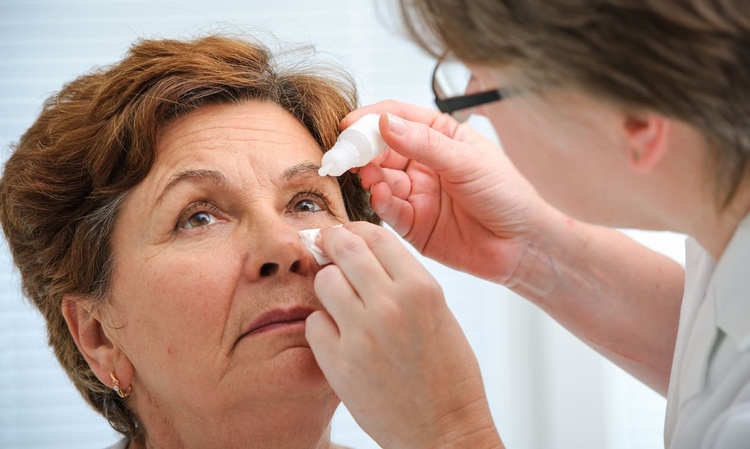Are Some Eye Drops Linked to Vision Problems? What You Need to Know
Some eye drops have recently come under scrutiny for potential links to vision harm, prompting health authorities and experts to issue warnings. This article will summarize which eye drops have been associated with reported problems, outline the potential risks, share expert advice, and explain practical steps you can take to protect and monitor your eye health.

Eye drops are among the most commonly used over-the-counter medications, trusted by millions to treat everything from dry eyes to allergies. However, growing awareness of potential safety concerns has prompted many to question whether their regular eye drops could be causing more harm than good. Understanding the relationship between certain eye drop formulations and vision problems is crucial for maintaining optimal eye health.
Recent Reports on Eye Drops and Vision Issues
Healthcare authorities have documented several cases where specific eye drop products have been linked to serious vision complications. These reports primarily involve contaminated products that have bypassed standard safety protocols, leading to infections that can cause permanent vision damage. The most concerning cases have involved bacterial contamination, particularly with drug-resistant strains that prove difficult to treat effectively.
Regulatory bodies have issued warnings about products manufactured in facilities with inadequate quality control measures. These contaminated drops have been associated with cases of keratitis, endophthalmitis, and other severe eye infections that can result in vision loss or blindness. The incidents highlight the importance of purchasing eye drops from reputable manufacturers and retailers.
Which Eye Drops Are Implicated?
Several categories of eye drops have been identified as potentially problematic. Artificial tears and lubricating drops from certain manufacturers have faced recalls due to contamination issues. Some preservative-free formulations, while generally considered safer for regular use, have been implicated when manufacturing standards were compromised.
Imported products that lack proper regulatory oversight pose particular risks. These may contain unlisted ingredients, incorrect concentrations of active compounds, or harmful contaminants. Additionally, some prescription eye drops used for glaucoma treatment have been associated with vision changes when used incorrectly or when patients develop sensitivity to specific ingredients.
Generic formulations, while typically safe and effective, require careful attention to manufacturing standards. Products from facilities that fail to meet stringent quality requirements may pose risks regardless of their active ingredients.
Symptoms and Side Effects to Watch For
Recognising the warning signs of problematic eye drop use is essential for preventing serious complications. Immediate symptoms that warrant medical attention include severe eye pain, sudden vision changes, increased light sensitivity, and unusual discharge or redness that worsens rather than improves with treatment.
More subtle signs may develop gradually and include persistent irritation despite regular use, changes in vision clarity, or the development of new floaters or visual disturbances. Some users report experiencing burning sensations that intensify over time rather than diminishing as the eyes adjust to the medication.
Systemic symptoms, though less common, can occur with certain formulations. These may include headaches, dizziness, or allergic reactions that extend beyond the eye area. Any unexpected reaction following eye drop use should be evaluated by a healthcare professional promptly.
Expert Advice on Safe Eye Drop Use
Ophthalmologists emphasise several key principles for safe eye drop use. First, always purchase products from reputable pharmacies and avoid unusually cheap alternatives that may indicate compromised quality. Check expiration dates carefully and never use drops that have changed colour, consistency, or smell.
Proper application technique significantly impacts both effectiveness and safety. Wash hands thoroughly before use, avoid touching the dropper tip to any surface including the eye, and wait at least five minutes between different eye medications if using multiple products.
Storage conditions matter considerably. Most eye drops should be stored at room temperature away from direct sunlight, though some require refrigeration. Never share eye drops with others, as this can spread infections and contamination.
Protecting Your Vision: What You Should Do
Proactive measures can significantly reduce the risk of vision problems related to eye drop use. Regular eye examinations allow professionals to monitor for early signs of complications and adjust treatment plans accordingly. Inform your eye care provider about all eye drops you use, including over-the-counter products.
Maintain detailed records of eye drop use, including brand names, batch numbers, and any symptoms experienced. This information proves invaluable if problems develop and can help identify patterns or specific product issues.
Consider preservative-free options for frequent use, as preservatives can cause irritation and sensitivity over time. However, ensure these products come from reputable manufacturers with proper quality control measures in place.
Stay informed about product recalls and safety warnings issued by regulatory authorities. Sign up for alerts from relevant health agencies to receive timely information about potentially problematic products.
This article is for informational purposes only and should not be considered medical advice. Please consult a qualified healthcare professional for personalized guidance and treatment.




